Controverscial.Com
![]()
Welcome
![]()
|
Controverscial.Com
Welcome
|
|
|
Controverscial.Com
Welcome
|



(Paths,
Covens, Churches and Organizations)
![]()
Wicca is a wonderfully diverse and contemporary spiritual religion. Many of its traditions are based on and reviving the ancient pagan, pre-Christian religions of Europe. There are many differing paths and traditions contained within Wicca, each with it’s own brand of ritual and magic. But perhaps the single most common theme among all these traditions is an overriding reverence for life, nature and the environment as seen through the Goddess and God. Below I have listed some of the main Paths, Covens, Churches and Organizations that come under the banner of Wicca:
Witches here, witches there,
Witches everywhere.
White witch, Black witch,
Good witch, Wicked witch,
Who can tell the difference?
Contemporary witch, Coven witch,
Traditional witch, Kitchen witch,
Hereditary witch, Heath witch,
Who and what are they?
Gardnerian witch, Eclectic witch,
Alexandrian witch, Solitary witch,
Nordic witch, Celtic witch,
Feri witch, Wicca witch.
But which 'Witch' is which?
(George Knowles)
Alexandrian Wicca / Aquarian Tabernacle Church (ATC) / Ár Ndraíocht Féin (ADF) / Blue Star Wicca / British Traditional (Druidic Witchcraft) / Celtic Wicca / Ceremonial Magic / Chaos Magic / Church and School of Wicca / Circle Sanctuary / Covenant of the Goddess (COG) / Covenant of Unitarian Universalist Pagans (CUUPS) / Cyber Wicca / Dianic Wicca / Eclectic Wicca / Feri Wicca /
Gardnerian Wicca / Georgian Tradition / Hereditary Witchcraft / Hermetic Order of the Golden Dawn (H.O.G.D.) / Kitchen Witch (Hedge Witch) / Minoan Brotherhood and Minoan Sisterhood Tradition / Nordic Paganism / Pagan Federation / Pectic-Wita / Seax-Wica / Shamanism / Solitary / Strega / Sylvan Tradition / Vodoun or Voodoo / Witches League of Public Awareness (WLPA) /
![]()
Founded
by Alex Sanders and his wife
Maxine in the 1960's, the Alexandrian Tradition originated in England.
Alex Sanders was often referred to as the “King of the Witches”, and with
the help of his wife Maxine, they were instrumental in opening up Wicca to the
general public. During the 1960’s and early 70’s, they were
responsible for initiating many hundreds of newcomers into the craft, amongst
whom where Stewart Farrar and
Janet Owen.
In the
early days the original rituals of the tradition are thought to have been
Gardnerian, plagiarized by Alex and embellished with a few of his own
amendments. These he then used to found his own coven from which emerged
the Alexandrian Tradition. Today although still similar to Gardnerian in
terms of its hierarchical structure, the Alexandrian Tradition tends to be more
eclectic and liberal, focusing strongly on ceremonial magick.
http://en.wikipedia.org/wiki/Alexandrian_Wicca
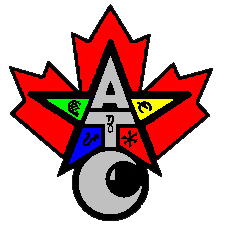 The Aquarian
Tabernacle Church was founded on the 01st
November 1979 in Index, Washington, by Pete “Pathfinder” Davis and
dedicated to providing religious services and support to the larger Wiccan
community. On the 12th
of November 1988 the ATC gained governmental recognition in the USA, and on the
30th of December 1991 won IRS group exemption as a Wiccan tradition.
This means that any congregation that the ATC accepts as a group
affiliate automatically receives Church tax-exemption within the US.
Since then the ATC has also won recognition as a Church by the
government’s of Canada and Australia.
The Aquarian
Tabernacle Church was founded on the 01st
November 1979 in Index, Washington, by Pete “Pathfinder” Davis and
dedicated to providing religious services and support to the larger Wiccan
community. On the 12th
of November 1988 the ATC gained governmental recognition in the USA, and on the
30th of December 1991 won IRS group exemption as a Wiccan tradition.
This means that any congregation that the ATC accepts as a group
affiliate automatically receives Church tax-exemption within the US.
Since then the ATC has also won recognition as a Church by the
government’s of Canada and Australia.
The ATC is a positive, life-affirming spirituality; it is a
non-dualist, non-racist, non-sexist, non-exclusive, bipolar and ecologically
oriented faith dedicated to the preservation of Holy Mother Earth and the
revival of the worship of “The Old Gods” in a modern context.
ATC members seek to achieve the fullest of human potential by the
creation of a peaceful world of love, freedom, health and prosperity for all
sentient beings.
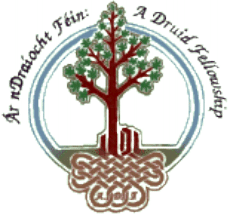 Ár Ndraíocht Féin (pronounced - arn ree-ocht fane)
in Gaelic means “Our Own Druidism”, is an independent religious fellowship
of neo-Pagan Druids founded in 1983 by P.E.I (Isaac)
Bonewits, a former
Archdruid of several groves in the Reformed Druids of North America.
Ár Ndraíocht Féin has no direct links to the ancient Druids but is a
reconstruction of Druidic and Indo-European Pagan rituals and religions.
Organized into groves, many of them named after trees, the ADF integrates
religion with alternate healing arts, ecology-consciousness, psychic development
and artistic expression. They have
eight seasonal High Days (equivalent to the Wiccan Sabbats) and they conduct
regular study and discussion groups in addition to a wide range of artistic
activities.
Ár Ndraíocht Féin (pronounced - arn ree-ocht fane)
in Gaelic means “Our Own Druidism”, is an independent religious fellowship
of neo-Pagan Druids founded in 1983 by P.E.I (Isaac)
Bonewits, a former
Archdruid of several groves in the Reformed Druids of North America.
Ár Ndraíocht Féin has no direct links to the ancient Druids but is a
reconstruction of Druidic and Indo-European Pagan rituals and religions.
Organized into groves, many of them named after trees, the ADF integrates
religion with alternate healing arts, ecology-consciousness, psychic development
and artistic expression. They have
eight seasonal High Days (equivalent to the Wiccan Sabbats) and they conduct
regular study and discussion groups in addition to a wide range of artistic
activities.
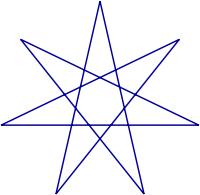
Founded in 1976 in Norristown, PA by Frank Dufner (“the
Wizard”) and Tzipora Katz, who later moved to Manhattan, where they trained
and initiated a number of people. Early
rituals were based on Alexandrian and Greco-Roman Traditions.
After Frank and Tzipora's divorce, in the early 1980's, Kenny Klein
became high priest, steering the Tradition towards a more traditional British
form, discarding Alexandrian and ceremonial rituals and replacing them with
British folkloric Craft practices, including the 8 Paths of Power, the 7 Tenets
of Faith, and the Drawing Down of the Moon and Sun.
Touring the country from 1983-1992 performing music, Kenny and Tzipora
continued to teach Blue Star Wicca, initiated many people and founded many
covens, at the same time recording and distributing lessons on cassette tapes.
Blue Star’s rigorous training can take 2-3 years before initiation.
Druidic
Witchcraft is an eclectic tradition, drawing its beliefs and practices from a
variety of sources. These include
elements of the Druid religion, as well as Irish, Celtic, and Gardnerian
beliefs. Their coven training
consists of a degree structure similar to that advocated by other traditions.
The International Red Garter is perhaps their most popular Order at this
time.
Druidic
Witchcraft should not be confused with that of the Druid Religion, which is
entirely different. Druids are not
witches and do not practice magick, though there are many links and similarities
between the two. For instance, the
traditional cauldron of the witches is in likeness to the Sacred Cauldron of
Inspiration, which is presided over by the Goddess Cerridwen, who is revered by
the Bards and Druids.
Other similarities include the four great annual festivals celebrated by the Druids, these mark the four changing seasons; Winter, Spring, Summer, and Autumn, and are identical to the four great Sabbats celebrated by witches. The Druids also celebrate the lesser Sabbats, the solstices and equinoxes, known to them by their Druidic names as the four Albans; Alban Arthan – the winter solstice, Alban Eilir – the spring equinox, Alban Hefin – the summer solstice, and Alban Elfed – the autumn equinox.
The
Druids in common with witches hold to a belief in reincarnation.
They are taught that the human soul has to pass through a number of
existences while in Abred, the Circle of Necessity, before attaining to Gwynvyd,
the Circle of Blessedness. Abred
was the condition of earthly existence, but once transcended and its lessons
learned, the soul would return to it no more.
Three things hold back the soul’s progression to achieve Gwynvyd -
Pride, Falsehood, and Cruelty.
http://www.witchvox.com/va/dt_va.html?a=usxx&c=trads&id=3293
The
Celtic tradition is based on an eclectic blend of materials, beliefs and
practices taken from the pre-Christian, Celtic and Gaulish peoples of Northern
Europe, including Gaul, Ireland, Wales, and Scotland.
This tradition has obvious close links with the Druids, who of old were
the “wise men” and “priests” of the ancient pagan Celts and Gaul’s.
The Celtic tradition is an earth-based tradition, and has a strong focus
on its religious belief’s.
Many
aspects of Christianity, as adopted by the church, were taken from ancient
Celtic beliefs. The “Holy
Grail” can be attributed to the pagan’s “Cerridwyn’s Cauldron”,
likewise the Celtic pagan goddess “Brigit” became the Christian’s “Saint
Bride”.
http://www.janeraeburn.com/brigantia/intro.htm
A form of magic that calls upon the aid of beneficent
spirits and is akin to religion. Ceremonial
Magic is based upon a blend of doctrines taken from the teachings of Plato and
other Greek philosophers, Oriental mysticism, Judaism and Christianity.
Ceremonial Magic can be divided into three forms:
Enochian, Thelemic and Eclectic. Enochian
Magic originated with John Dee and Edward Kelly in the 16th century who
developed the Enochian system of Angelic communication with spirits.
This involved Nineteen Calls (or Keys):
incantations in the Enchonian language, a complex language of unknown
origin.
Enochian Magic was revived in the late 1800’s by S.L.
MacGregor Mathers of the Hermetic Order of the Golden Dawn and studied at
length by Aleister Crowley. From
his studies Crowley developed his own system of Thelemic Magick, which in turn
has been expanded and developed into an Eclectic system of Ceremonial Magic
based on a variety of different sources including:
Alchemy, Egyptology, Kabalistic doctrines and Chaos Magic etc.
Ceremonial Magic requires a rigorous discipline and has an
intellectual appeal; the mage derives power from God (the Judeo-Christian God)
through the successful control of spirits, usually demons, which are believed
easier to control than angels. Demons
may be good, evil or neutral. In
its highest sense, Ceremonial Magic is a transcendental experience that takes
the mage into mystical realms and into communication with the Higher Self.
Ceremonial Magic is also known as High Magic, Ritual Magic, Theurgic
Magic and Theurgy.
http://en.wikipedia.org/wiki/Ceremonial_magic
In the
late 1970's some twenty years after the death of the great “Austin
Osman Spare” (1886-1956), a Mr. Carroll and Mr. Sherwin formed the
"Illuminates of Thanateros" (IOT), a new tradition that became
synonymous with Chaos Magic. Chaos
Magic is based primarily on the workings and philosophy of Austin Osman Spare.
It would seem to me that Chaos Magic is not exactly Witchcraft.
While it incorporates witchcraft, its the cutting edge of "High
Magic" and is more into the realm of the Magician than that of the Witch.
To
explain Chaos Magic I can do no better than to quote the authors introduction to
a book I have recently read, “Understanding
Chaos Magic - by Jaq D. Hawkins”. I
do so in the interest that shared information helps us all, and have adapted the
text slightly for use here:
"Chaos
Magic is the newest and fastest growing area of hands-on practical magic
available to the modern magician. It
is an area of study that disposes of the need for religion, or pre-packaged
philosophy and superstition in the use of magic. The Chaos Magician seeks to understand the natural laws
behind the workings of magic, and the- reasons behind the use of ritual in the
performance of a magical working.
Chaos
magic leaves the practitioner free to establish his/her own ideas of method,
ethics and the appropriate uses of magic. It
is magic for a liberated free thinker who is able to go beyond the teachings of
any book to the outermost reaches of imagination in the creation of one's own
magical world.
It is
magic based on the concept of the primal creative force itself, a realm of
infinite probability. Creative
Chaos is a subject most useful to experienced magicians who can determine for
themselves the risk factor in the release of powerful spells that work.
While
the actual practice of this form of magic is recommended only for the
experienced magician, the subject is of interest to anyone who can understand
the way the mind can effect our environment.
Chaos
Magic is based on natural laws, many of which are only just beginning to be
understood by the scientific community. Stripped
of superstition and religious bigotry, it is a realm where fact meets theory,
and results are the objective.
This
is a magical philosophy that transcends tradition and dogma.
It is a journey toward results rather than hierarchical megalomania.
It is as useful and effective to the individual as it is for a group, and
infinitely adaptable to the needs of the many or the few.
Any and all methods are allowed and encouraged, the only requirement is
that it works.
Chaos
Magic is the cutting edge of modern magic.
It is on the minds and lips of magic users of all descriptions and in
many parts of the world. As we
learn more and more about the nature of magic and reality, we are beginning to
realize that behind all forms of magic, are the natural laws of Chaos".
Adapted
from the introduction of a book by: Jaq
D. Hawkins – “Understanding Chaos
Magic”, 1996.
In my
opinion the book seems to explain Chaos Magic as advocating the premise that
"results justify the means" however extreme the method used to achieve
those results. I'm not sure I fully
agree with this for it’s easy to see how such a premise could be used and
abused by those would be practitioners inexperienced with the powers and
influences of high end magic. It
makes no reference too, nor does it differentiate between good or bad, light or
dark, white and black magic. Magic
itself as most people seem to agree is inanimate; it’s the person using it
that makes all the difference between white and black and the way that it is
used. Should however "how
magic is achieved as long as the method works", make any difference?
http://en.wikipedia.org/wiki/Chaos_magic
 The Church and School of Wicca was
founded by Gavin and
Yvonne Frost in the early 1970’s, initially as a correspondence School for
presenting courses in their own blend magic, sometimes called Celtic Wicca.
Much of their course material was later published in their book:
The Witches Bible
(1972). Originally the book had no mention of the Goddess and contained
some extremely disturbing practices relating to the initiation of the “Wicca
Child” (i.e. children as young as ten years old), which dismayed many
who would otherwise have been drawn to the tradition.
While the latter
was modified to include mention of the Goddess when the book was
re-issued as “The Good Witch's Bible” in (1976), the other business
is still cause for contention within the general Wiccan community today.
The Church and School of Wicca was
founded by Gavin and
Yvonne Frost in the early 1970’s, initially as a correspondence School for
presenting courses in their own blend magic, sometimes called Celtic Wicca.
Much of their course material was later published in their book:
The Witches Bible
(1972). Originally the book had no mention of the Goddess and contained
some extremely disturbing practices relating to the initiation of the “Wicca
Child” (i.e. children as young as ten years old), which dismayed many
who would otherwise have been drawn to the tradition.
While the latter
was modified to include mention of the Goddess when the book was
re-issued as “The Good Witch's Bible” in (1976), the other business
is still cause for contention within the general Wiccan community today.
Seeking legal recognition for the School as a Church and a
tax-exempt non-profit organization, on the 31st August 1972 the IRS
issued the Church of Wicca with a “Letter of Determination” making it the
first legally recognised Wicca Church in America.
It also helped to redefine witchcraft in America as a bona-fide religion
entitled to all the same benefits and representation as all other religions.
Over time the Frost’s continued to develop the School of
Wicca and now offer correspondence courses on such subjects as:
Astrology, Celtic Witchcraft, Psychic Development, Tantric Yoga, Healing
and Herbs among others, these they continually update to include new trends and
wisdom. Through the School they have published America’s longest
lasting Wiccan periodical called “Survival”, which today is edited by
their daughter Bronwyn. In 1996,
Gavin and Yvonne moved to their present location in Hinton, West Virginia.
 Circle as a craft tradition was founded in 1974 by Selena
Fox and Jim Alan, and differs from many other traditions of Wicca in that it
blends both old and new forms of Pagan spirituality and folkways with
cross-cultural Shamanism and transpersonal psychology.
In 1978 Circle was incorporated as a non-profit spiritual centre and was
given recognition as a legal Wiccan Church by state and federal governments.
Also in 1978 Circle published a newsletter called “Circle Network
News”, which by 1998 had expanded into a quarterly magazine format and is
one of the oldest Pagan journals to remain in continuous print. Today its headquarters are centred at Circle Sanctuary, a
200-acre Nature reserve and organic herb farm in the rolling hills of Mount
Horeb near Madison, Wisconsin.
Circle as a craft tradition was founded in 1974 by Selena
Fox and Jim Alan, and differs from many other traditions of Wicca in that it
blends both old and new forms of Pagan spirituality and folkways with
cross-cultural Shamanism and transpersonal psychology.
In 1978 Circle was incorporated as a non-profit spiritual centre and was
given recognition as a legal Wiccan Church by state and federal governments.
Also in 1978 Circle published a newsletter called “Circle Network
News”, which by 1998 had expanded into a quarterly magazine format and is
one of the oldest Pagan journals to remain in continuous print. Today its headquarters are centred at Circle Sanctuary, a
200-acre Nature reserve and organic herb farm in the rolling hills of Mount
Horeb near Madison, Wisconsin.
http://www.circlesanctuary.org/
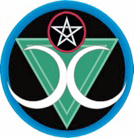 The
Covenant of the Goddess (CoG) is an internationally recognized Wiccan church
with an organization of Wiccan clergy, covens and solitaries.
The COG was founded in 1975 at Coeden Brith, a wildness sanctuary
owned by Alison Harlow and situated on Greenfield Ranch near Ukiah in
California. Organized into a
cross-traditional federation of over one hundred covens, solitary practitioners,
elders and associates, members of the COG have joined together to win
recognition for the Craft as a legitimate and legally recognized religion.
Incorporated as a non-profit religious organization in California, COG
has grown to be an international
organization with members throughout the United States, Canada and
Overseas.
The
Covenant of the Goddess (CoG) is an internationally recognized Wiccan church
with an organization of Wiccan clergy, covens and solitaries.
The COG was founded in 1975 at Coeden Brith, a wildness sanctuary
owned by Alison Harlow and situated on Greenfield Ranch near Ukiah in
California. Organized into a
cross-traditional federation of over one hundred covens, solitary practitioners,
elders and associates, members of the COG have joined together to win
recognition for the Craft as a legitimate and legally recognized religion.
Incorporated as a non-profit religious organization in California, COG
has grown to be an international
organization with members throughout the United States, Canada and
Overseas.
Decisions of the COG are made at the annual Grand Council
meeting or in local “Chapters”
that cover major Cities, States or other countries.
Coven’s can apply for membership to the COG if they have a cohesive,
self-perpetuating group that has been meeting for six months or more.
Groups and covens are expected to follow a code of ethics as defined by
the COG, in that a coven must have three or more members studying for the
priesthood, one of whom is an Elder; and the focus of the group’s ritual and
theology is the worship of the Goddess and the Old Gods (or the Goddess alone).
Politically
the COG is proactive and have social and professional networking for Education,
Legal Assistance, Information and Referrals.
They advocate and support Clergy and Elder’s, and perform and give out
Handfasting Certificates. The COG
Interfaith Network provides representatives for Paganism at World Religious
Conferences, and their Children’s services includes the Boy Scouts Of America
Paganism merit badge and the “Hart & Crescent Award”.
Each year the COG sponsors and holds a National Festival on Labour Day
weekend, alternating the festivals sites between the East coast, Midwest and
West coast area’s of the United States.
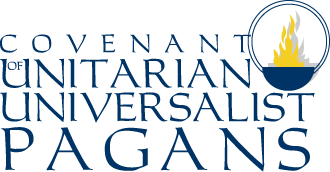 The
Unitarian Universalist Association (UUA) is a liberal religious denomination
formed in 1961 by a merger of the American Unitarian Association and the
Universalist Church of America. By
the mid-19th century the Unitarians and Universalists held to a similar but
separate set of principles, each with a strong emphasis on congregational
independence and humanitarian concerns. During
the early half of the 1900’s, each began to promote closer cooperation and in
1953 the Council of Liberal Churches was formed bringing together their
publishing and educational programs. After a plebiscite in 1959 showed that members in both groups
were in favor of complete union, separate denominational meetings ratified a
common charter in 1960 and the merger was completed the following year.
The
Unitarian Universalist Association (UUA) is a liberal religious denomination
formed in 1961 by a merger of the American Unitarian Association and the
Universalist Church of America. By
the mid-19th century the Unitarians and Universalists held to a similar but
separate set of principles, each with a strong emphasis on congregational
independence and humanitarian concerns. During
the early half of the 1900’s, each began to promote closer cooperation and in
1953 the Council of Liberal Churches was formed bringing together their
publishing and educational programs. After a plebiscite in 1959 showed that members in both groups
were in favor of complete union, separate denominational meetings ratified a
common charter in 1960 and the merger was completed the following year.
The UUA
has no official statement of faith and does not require its Ministers or members
to subscribe to any particular religion, indeed congregations may include many
widely different beliefs and practices. Their
headquarters are located in Boston, from where they coordinate Ministers’
Associations, Women’s Federations, Service Committees and Religious Education
throughout 23 administrative districts across the U.S.A. and Canada.
There are currently some 950 UU Churches with about 172,000 members in
the U.S.A., and about 48 Churches and some 6200 members in Canada.
The organization holds an annual General Assembly and is associated with
the International Association for Liberal Christianity and Religious Freedom.
The Covenant of Unitarian Universalist Pagans (CUUPS) is an
independent affiliate of the UUA,
and was chartered by them as a liturgical and theological community in 1987,
making it the first Pagan organization to be formally accepted into a
“mainstream” religion. Membership
of CUUPS is open to all UU members and those in sympathy with UU beliefs,
purposes and principles. One of the
beliefs of the UUA is: “The
spiritual teachings of Earth-centered traditions which celebrate the sacred
Circle of Life and instructs us to live in harmony with the rhythms of
nature”.
http://www.cuups.org/content2/index.php
Cyber
Wicca is less of a tradition of witchcraft in the practical sense of the craft,
and more about networking and disseminating information. The Internet is the ultra-modern age of Wicca, and more and
more people are turning to it in their quest to practice The Old Religion.
It is the ideal medium for the solitary or eclectic practitioner,
to learn from and communicate with others in the craft.
It is also ideal for those people unable to meet with and practice with
others, and indeed for those who for various reasons need to remain anonymous.
There
are now many groups on the Internet that take part in live play and group
rituals. This is accomplished
through synchronized live imagery and the typed word.
When you think about it, magick holds no boundaries, a person practicing
in England using the same tools, method and intent, synchronized with a person
in America, should and now do work together in common magical goals.
Many
teaching covens operate on the net, offering no end of courses in varying
aspects of the craft. These range
from courses on Healing, the use of Herbs & Spices, Stones & Gems,
courses on Divination including the use of Tarot cards and Crystal Ball scrying.
Some even offer degree courses for certain traditions, and the list goes
on.
I would
caution readers here, for many people charge for the privilege of learning,
nothing wrong in that, but some do so unscrupulously. It’s worth finding out who they are, what they are, and how
qualified they are, before paying them anything. Bare in mind what the “Wiccan
Rede” tells us:
"When ye have and hold a need, harken not to others greed.
With
a fool no season spend, nor be counted as his friend".
There
are on the Internet many Chat rooms, News groups and E-mail discussion groups
that can be joined where many Wiccans and other like-minded individuals meet,
talk and exchange information freely. These
are well worth investigating. My
own internet E-mail discussion group can be found at:
http://groups.yahoo.com/group/Email_Witches
Dianic
Wicca is a relatively new phenomenon in relation to traditional witchcraft,
though the goddess Diana has been revered since ancient times.
Zsuzsanna Budapest of California founded the tradition in the United
States during the 1970’s, and in the early 70’s was arrested and tried for
her belief’s.
Dianic
Wicca is a feminist religion, for women only.
They honour the deities in their feminine aspects only, and never invoke
the God or other male aspects into their rituals or sacred spaces.
This practice has caused many conflicts and heated discussions amongst
its members. Aside from this
exclusion of men, they follow the same ritual paths and beliefs as other Wiccan
traditions.
Many
Dianic members are politically active in the feminist movement, striving to lift
the oppression of female rights, and to bring about the equality of the sexes
into all walks of life. This is not
a requirement of the tradition; its left to the individual to make her own stand
and practice her own beliefs.
http://en.wikipedia.org/wiki/Dianic_Wicca
An
eclectic Wiccan as the term implies doesn’t follow any strict traditional
guidelines in their practice of the craft.
Eclectic Wicca includes a broad range of groups and individuals
who have based their philosophies, rituals and practices on a wide and varied
number of sources, and practice
only those beliefs that suit them best. They
often mix traditions and practices together in order to find that which most
suits their own circumstances, lifestyles and religious belief’s, practicing
whatever magic they consider obtains best results. This is mostly of modern origin for previously Wiccan
traditions had more restricting boundaries.
Eclectic Wicca emphasizes spontaneity and therefore plays
down the importance of such concepts as Initiations, Oaths, Tradition and
Lineage. Critics claim that the
majority of Eclectic practitioners take the position that Wicca is a completely
modern religion created by Gerald Gardner, and that the beliefs and practices of
Wicca are completely individualistic, therefore nobody can define “Wicca”
for others. Many
traditional Wiccans object to these groups using the name Wicca, and believe
their practice should simply be called Eclectic Witchcraft.
The Feri Tradition, (also known as the Faery or
Faerie
tradition) was founded by Victor and Cora
Anderson in the mid-late 1950’s, when they
were inspired to form their own tradition after reading a book by Gerald
B. Gardner “Witchcraft Today”.
Anderson based the tradition on fairy folklore and beliefs and was
universally recognized as the Grand Master of the Feri Tradition.
In 1959, Anderson initiated Gwydion
Pendderwen, and together they were
responsible for writing most of the tradition’s rituals, later adding
Alexandrian and Celtic influences.
An old
African priestess initiated Victor Anderson into Witchcraft in 1926, they
practiced a form of Witchcraft with Huna and African influences that was
primarily Dahomean-Haitian. Anderson
was one of the last genuine Kahuna. Some
of these earlier influences he incorporated into the new Feri tradition.
After visiting an Alex
Sanders coven in England, Pendderwen incorporated material from the
Alexandrian Book of Shadows.
Today the tradition has evolved and contains of a mixture of Green Wicca,
Celtic and Druidic practices as well as modern Witchcraft.
The Feri
Tradition honors the Goddess and Her son, brother and lover (The Divine Twins)
as the primary creative forces in the universe. The Gods are seen as real spirit beings like ourselves, and
not merely aspects of our psyche. The
tradition is an ecstatic tradition, rather than a fertility tradition with
emphasis on polytheism, practical magic, self-development and theurgy.
Strong emphasis is also placed on sensual experience and awareness,
including sexual mysticism, which is not limited to heterosexual expression.
This is
a mystery tradition of power, mystery, danger, ecstasy, and direct communication
with divinity. Most initiates are
in the arts and incorporate their own poetry, music and invocations into
rituals. The Tradition is
gender-equal, and all sexual orientations seem able to find a niche.
According to Francesca De Grandis, founder of the 3rd Road branch:
“Faerie power is not about a liturgy but about one’s body: a Fey shaman’s
blood and bones are made of stars and Faerie dust.
A legitimate branch of Faerie is about a personal vision that is the Fey
Folks’ gift to a shaman”.
Initially
small and secretive, many of the fundamentals of the tradition have now reached
a larger audience, mainly through the writings of Starhawk, one of the
tradition’s most famous initiate. Some
secret branches of the tradition remain, but while only a few hundred initiates
can trace their lineage directly back to Victor Anderson; many thousands are
estimated to practice neo-Feri Traditions.
http://en.wikipedia.org/wiki/Feri_Tradition
Alexandrian Wicca / Aquarian Tabernacle Church (ATC) / Ár Ndraíocht Féin (ADF) / Blue Star Wicca / British Traditional (Druidic Witchcraft) / Celtic Wicca / Ceremonial Magic / Chaos Magic / Church and School of Wicca / Circle Sanctuary / Covenant of the Goddess (COG) / Covenant of Unitarian Universalist Pagans (CUUPS) / Cyber Wicca / Dianic Wicca / Eclectic Wicca / Feri Wicca /
Gardnerian Wicca / Georgian Tradition / Hereditary Witchcraft / Hermetic Order of the Golden Dawn (H.O.G.D.) / Kitchen Witch (Hedge Witch) / Minoan Brotherhood and Minoan Sisterhood Tradition / Nordic Paganism / Pagan Federation / Pectic-Wita / Seax-Wica / Shamanism / Solitary / Strega / Sylvan Tradition / Vodoun or Voodoo / Witches League of Public Awareness (WLPA) /
![]()
Encyclopedia of Wicca & Witchcraft - By Raven Grimassi
An ABC of Witchcraft Past and Present - By
Doreen Valiente.
Understanding Chaos Magic - By Jaq D. Hawkins
Witta, An Irish Pagan Tradition - By Edain McCoy
To many to mention :-)
First published 02 September 2007 © George Knowles
![]()
![]()

Let there be peace in the world - Where have all the flowers gone?
My Personal Page / My Place in England, UK / My Family Tree (Ancestry)
Wicca/Witchcraft / What is Wicca / What is Magick
Traditional Writings:
Wiccan Rede / Charge of the Goddess / Charge of the God / The Three-Fold Law (includes The Law of Power and The Four Powers of the Magus) / The Witches Chant / The Witches Creed / Descent of the Goddess / Drawing Down the Moon / The Great Rite Invocation / Invocation of the Horned God / The 13 Principles of Wiccan Belief / The Witches Rede of Chivalry / A Pledge to Pagan Spirituality
Correspondence Tables:
Incense / Candles / Colours / Magickal Days / Stones and Gems / Elements and Elementals
Traditions Part 1 - Alexandrian Wicca / Aquarian Tabernacle Church (ATC) / Ár Ndraíocht Féin (ADF) / Blue Star Wicca / British Traditional (Druidic Witchcraft) / Celtic Wicca / Ceremonial Magic / Chaos Magic / Church and School of Wicca / Circle Sanctuary / Covenant of the Goddess (COG) / Covenant of Unitarian Universalist Pagans (CUUPS) / Cyber Wicca / Dianic Wicca / Eclectic Wicca / Feri Wicca /
Traditions Part 2 - Gardnerian Wicca / Georgian Tradition / Henge of Keltria / Hereditary Witchcraft / Hermetic Order of the Golden Dawn (H.O.G.D.) / Kitchen Witch (Hedge Witch) / Minoan Brotherhood and Minoan Sisterhood Tradition / Nordic Paganism / Pagan Federation / Pectic-Wita / Seax-Wica / Shamanism / Solitary / Strega / Sylvan Tradition / Vodoun or Voodoo / Witches League of Public Awareness (WLPA) /
Gods and Goddesses (Greek
Mythology) / Esbats &
Full Moons / Links
to Personal Friends & Resources / Wicca/Witchcraft
Resources / What's a spell? /
Circle Casting and
Sacred Space / Pentagram
- Pentacle / Marks
of a Witch / The Witches
Power / The Witches Hat
/ An
esoteric guide to visiting London / Satanism
/ Pow-wow
/ The
Unitarian Universalist Association / Numerology: Part 1
/ Part 2 / Part
3 / A
history of the Malleus Maleficarum: includes: Pope
Innocent VIII /
The
papal Bull /
The
Malleus Maleficarum /
An extract from the Malleus Maleficarum
/ The letter of approbation
/ Johann
Nider’s Formicarius /
Jacob
Sprenger /
Heinrich Kramer /
Stefano Infessura
/ Montague Summers /
The Waldenses
/ The Albigenses
/
The Hussites / The
Sun Dance
/ Shielding (Occult
and Psychic Protection) /
Sabbats in History and Mythology / Samhain (October 31st) / Yule (December 21st) / Imbolc (February 2nd) / Ostara (March 21st) / Beltane (April 30th) / Litha (June 21st) / Lughnasadh (August 1st) / Mabon (September 21st)
Rituals contributed by Crone: Samhain / Yule / Imbolc / Ostara / Beltane / Litha / Lammas / Mabon
Tools of a Witch / The Besom (Broom) / Poppets and Dolls / Pendulums / Cauldron Magick / Mirror Gazing
Animals in Witchcraft (The Witches Familiar) / Antelope / Bats / Crow / Fox / Frog and Toads / Goat / Honeybee / Kangaroo / Lion / Owl / Phoenix / Rabbits and Hares / Raven / Robin Redbreast / Sheep / Spider / Squirrel / Swans / Wild Boar / Wolf / Serpent / Pig / Stag / Horse / Mouse / Cat
In Worship of Trees - Myths, Lore and the Celtic Tree Calendar. For descriptions and correspondences of the thirteen sacred trees of Wicca/Witchcraft see the following: Birch / Rowan / Ash / Alder / Willow / Hawthorn / Oak / Holly / Hazel / Vine / Ivy / Reed / Elder. Also see: The Willow Tree (Folk Music)
Mystical Sacred Sites - Stonehenge / Glastonbury Tor / Malta - The Hypogeum of Hal Saflieni / Avebury / Cerne Abbas - The Chalk Giant / Ireland - Newgrange /
Rocks and Stones:
Stones - History, Myths and Lore
Articles contributed by Patricia Jean Martin: / Apophyllite / Amber / Amethyst / Aquamarine / Aragonite / Aventurine / Black Tourmaline / Bloodstone / Calcite / Carnelian / Celestite / Citrine / Chrysanthemum Stone / Diamond / Emerald / Fluorite / Garnet / Hematite / Herkimer Diamond / Labradorite / Lapis Lazuli / Malachite / Moonstone / Obsidian / Opal / Pyrite / Quartz (Rock Crystal) / Rose Quartz / Ruby / Selenite / Seraphinite / Silver and Gold / Smoky Quartz / Sodalite / Sunstone / Thunderegg / Tree Agate / Zebra Marble
Wisdom:
Knowledge vs Wisdom by Ardriana Cahill / I Talk to the Trees / Awakening / The Witch in You / A Tale of the Woods
Articles and Stories about Witchcraft:
Murder by Witchcraft / The Fairy Witch of Clonmel / A Battleship, U-boat, and a Witch / The Troll-Tear (A story for Children) / Goody Hawkins - The Wise Goodwife / The Story of Jack-O-Lantern / The Murder of the Hammersmith Ghost / Josephine Gray (The Infamous Black Widow) / The Two Brothers - Light and Dark
Old Masters of Academia:
Pliny the Elder / Hesiod / Pythagoras
Abramelin the Mage / Agrippa / Aidan A. Kelly / Albertus Magnus “Albert the Great” / Aleister Crowley “The Great Beast” / Alex Sanders "the King of the Witches” / Alison Harlow / Amber K / Anna Franklin / Anodea Judith / Anton Szandor LaVey / Arnold Crowther / Arthur Edward Waite / Austin Osman Spare / Biddy Early / Bridget Cleary / Carl Llewellyn Weschcke / Cecil Hugh Williamson / Charles Godfrey Leland / Charles Walton / Christina Oakley Harrington / Damh the Bard (Dave Smith) / Dion Fortune / Dolores Aschroft-Nowicki / Dorothy Morrison / Doreen Valiente / Edward Fitch / Eleanor Ray Bone “Matriarch of British Witchcraft” / Dr. John Dee and Edward Kelly / Dr. Leo Louis Martello / Eliphas Levi / Ernest Thompson Seton / Ernest Westlake and the Order of Woodcraft Chivalry / Fiona Horne / Friedrich von Spee / Francis Barrett / Gerald B. Gardner / Gavin and Yvonne Frost and the School and Church of Wicca / Gwydion Pendderwen / Hans Holzer / Helen Duncan / Herman Slater "Horrible Herman" / Israel Regardie / James "Cunning" Murrell / Janet Farrar & Gavin Bone / Jessie Wicker Bell “Lady Sheba” / John Belham-Payne / John George Hohman / John Gerard / John Gordon Hargrave (the White Fox) / John Michael Greer / John Score / Johannes Junius the Burgomaster of Bamberg / Joseph John Campbell / Karl von Eckartshausen / Laurie Cabot "the Official Witch of Salem" / Lewis Spence / Margaret Alice Murray / Margot Adler / Marie Laveau the " Voodoo Queen of New Orleans" / Marion Weinstein / Matthew Hopkins “The Witch-Finder General” / Max Ehrmann and the Desiderata / Monique Wilson the “Queen of the Witches” / Montague Summers / Nicholas Culpeper / Nicholas Remy / M. R. Sellers / Mrs. Grieve "A Modern Herbal" / Oberon and Morning Glory Zell-Ravenheart / Old Dorothy Clutterbuck / Old George Pickingill / Paddy Slade / Pamela Colman-Smith / Paracelsus / Patricia Crowther / Patricia Monaghan / Patricia “Trish” Telesco / Philip Emmons Isaac Bonewits / Philip Heselton / Raymond Buckland / Reginald Scot / Robert Cochrane / Robert ‘von Ranke’ Graves and "The White Goddess" /
Rudolf Steiner / Rosaleen Norton “The Witch of Kings Cross” / Ross Nichols and The Order of Bards, Ovates & Druids / Sabrina - The Ink Witch / Scott Cunningham / Selena Fox / Silver Ravenwolf / Sir Francis Dashwood / Sir James George Frazer / S.L. MacGregor Mathers and the “Hermetic Order of the Golden Dawn” / Starhawk / Stewart Farrar / Sybil Leek / Ted Andrews / The Mather Family - includes: Richard Mather, Increase Mather, Cotton Mather / Thomas Ady / Vera Chapman / Victor Henry Anderson / Vivianne Crowley / Walter Brown Gibson / William Butler Yeats / Zsuzsanna Budapest
Many of the above biographies are brief and far from complete. If you know about any of these individuals and can help with aditional information, please cantact me privately at my email address below. Many thanks for reading :-)
While I have taken due care and dilligence to credit all sources where possible, this website may contain copyrighted material which has not been specifically authorized by the copyright owner. My use of making such material available here is done so in my efforts to advance our understanding of religious discrimination, the environmental and social justice issues etc. If you wish to use copyrighted material from this wedsite for purposes of your own then you must obtain permission from the relevant copyright owner yourself.
![]()
My online email discussion group:
http://groups.yahoo.com/group/Email_Witches

Help send a message of peace around the world! The Dove of Peace flies from site to site, through as many countries as possible. It does not belong to ANY belief system. Please help make a line around the globe by taking it with you to your site, by giving it to someone for their site, by passing it on to another continent or to the conflict areas of the world. May trouble and strife be vanquished in it's path.

mailto:George@controverscial.com
![]()
|
|